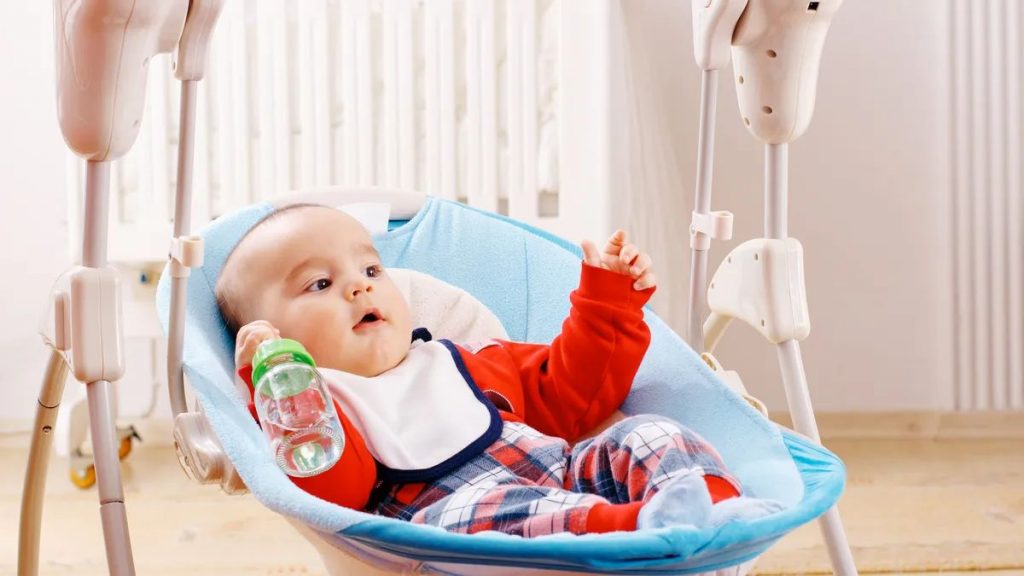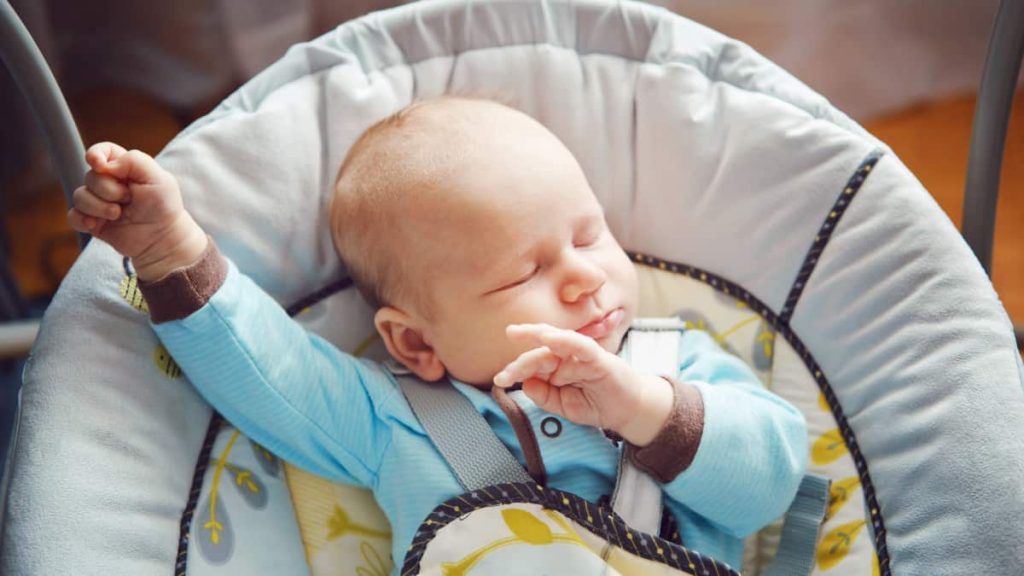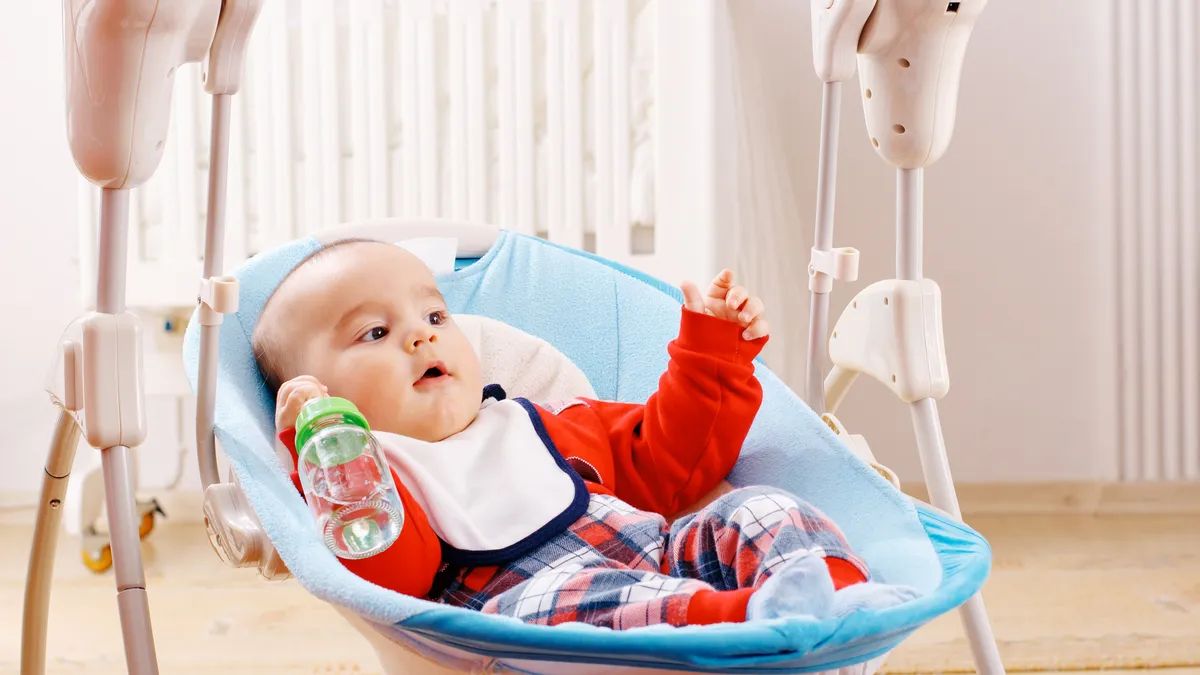When it comes to our newborns, we’re prepared to do anything to make them comfortable, healthy, and happy. We buy various pieces of furniture, like rocking chairs, swings, safety car chairs, gliders, etc., to put them to sleep easily or entertain them.
It’s no secret that every baby and child likes the gentle movements of the swings. However, how long can a newborn be in a swing? The safety of our little ones is a priority, so let’s find out how long they should stay and sleep while moving back and forth.

How Long Can a Newborn Be in a Swing
It’s not advisable to leave your newborn in a swing for more than one hour a day. These tools are perfect for entertaining infants or putting them to sleep, but they don’t provide the necessary support, and they can increase the danger of developing plagiocephaly or SIDS.
It breaks my heart when I have to move my boy from the swing to the bassinet. The truth is, he is so used to falling asleep in his swing that I’m always afraid I’ll wake him up when moving him and have to lull him to sleep all over again.
However, swings are not as harmless as they look. Therefore, I don’t mind repeating the process as many times as needed as long as my child is safe. If your little one also wants to fall asleep or spend time in their swing, you should always be very careful too.
You don’t have to remove the swing entirely. However, I strongly advise you to measure the time your child spends on it. You should not leave your baby in the swing for more than half an hour at a time. Moreover, don’t leave your child in the swing for more than one hour a day.
Here’s why!
Potential risks of leaving a newborn in a swing for too long
As parents, we’re always afraid for our children and give our best to keep them safe. However, some products, items, or furniture can put our kids in danger, even if they look harmless. The swings are some of those innocent-looking things that may harm our little ones.
There are multiple potential risks related to using a swing for too long. For starters, the baby should sleep on its back on a flat surface to decrease the risk of sudden infant death syndrome.
Furthermore, sleeping in an upright position increases the chances of suffocation. That’s because newborns are not able to hold their heads up. Since swings usually are designed to hold the baby in an upright position, their head may slump over and block the airway.
Besides these direct dangers that, God forbid, may happen, there are other situations that may put your child in danger. Swings usually come with a variety of toys that are meant to entertain the baby visually. However, your little one may pull some of the toys, or the frame that holds them may fall down directly on the baby.
Read more: How Long a Baby Can Sleep in a Bassinet

Plagiocephaly and brachycephaly
Plagiocephaly and brachycephaly are the two main types of flat head syndrome, typical for newborns, especially in the first months. Usually, the syndrome is caused by spending too much time lying in a specific position.
Since babies usually lie on their backs, plagiocephaly can occur if they hold their heads on one side. Brachycephaly also flattens the head but on its back side. In most cases, sleeping on the back may flatten the head, but this is not a permanent condition.
Since swings don’t provide a firm surface, using them may cause plagiocephaly, that is, reshaping (flattening) one side of the head. Even though this usually is not a permanent condition, I strongly advise you not to leave your child in the swing for too long because you’ll put them in danger of SIDS as well.
So, how long can a newborn be in a swing? Well, you can leave your child in a swing for long enough to avoid brachycephaly but not for too long if you want to prevent plagiocephaly.
Also read: How to Get Baby to Nap Longer
Should I let my baby sleep in a swing?
Absolutely not! You should never let your baby sleep in a swing, not even during the day. Although constant sleep on their back may increase the chances of brachycephaly, the condition is not permanent and is treatable, unlike other dangers, such as sudden infant death syndrome.
Safety tips for using a swing
I admit that swings can be life savers, especially when you need a minute or two and you’re alone at the moment. Moreover, they are fun, and kids love them because they move and they let the babies observe their surroundings.
So, I don’t recommend you to get rid of the swing completely. On the contrary, you can take advantage of this helpful equipment and entertain your little one at the same time.
However, you should be very careful. Constant vigilance! Here are some safety tips that may help you:
- Always read the manufacturer’s instructions for usage, maintenance, and safety precautions
- Ensure your baby’s height and weight are within the manufacturer’s criteria
- Use the swing in its most reclined position
- Make sure that the toys or mobiles attached to the swing are secure
- Never leave the baby unattended
- Don’t leave the baby in the swing for more than 30 minutes at a time
Conclusion
So, this is it! For the last time – how long can a newborn be in a swing, and are the swings dangerous for infants? As I said previously, swings are safe as long as you follow all safety precautions, constantly monitor the baby while they’re in the swing, and don’t leave your child for more than 30 minutes in it.
After all, swings can be very helpful for parents in situations where you need both hands free or you can’t find a way to lull your child to sleep. Moreover, kids love them, and there’s no reason to get rid of the swing if you monitor your child constantly and minimize the time the baby spends in it.








